Behold, the Mighty Marsupial!
“He will actually physically chase her for about two hours and around in a figure of eight. Every so often he’ll catch her and bite her on the bum. This is wombat foreplay.”
(Dr. Catriona MacCallum, 2002)
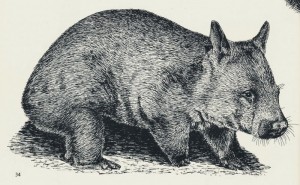 I can’t explain why exactly I’m fascinated by wombats, and maybe that’s for the best.
I can’t explain why exactly I’m fascinated by wombats, and maybe that’s for the best.
They burrow, they gallop, they poop cubes. What’s not to love?
Wombats are smart. They have a large brain and they know how to use it.
 They frolic and play with what seems like inexhaustible energy. Despite their short legs, they are also quite fast, able to run at around 40 kph. They are one of the few species of animal in the world known to gallop.
They frolic and play with what seems like inexhaustible energy. Despite their short legs, they are also quite fast, able to run at around 40 kph. They are one of the few species of animal in the world known to gallop.
And they are stubborn. They will often push their way through fences and leave a hole large enough for less desirable intruders, such as Dingoes and rabbits. While Wombats are a protected species, there are still some areas particularly in eastern Victoria, where they are shot as vermin.
There are three living species of wombat: the Common Wombat (Vombatus ursinus), the Southern Hairy-Nosed Wombat (Lasiorhinus latifrons), and the endangered Northern Hairy-Nosed Wombat (Lasiorhinus krefftii).
The Uncommon Common Wombat
The common wombat is a marsupial and the largest burrowing herbivorous mammal on Earth. There are three subspecies of common wombat: Vombatus ursinus hirsutus found on the mainland, Vombatus ursinus tasmaniensis found in Tasmania, and Vombatus ursinus ursinus once found throughout the Bass Strait islands but now restricted to Flinders Island.
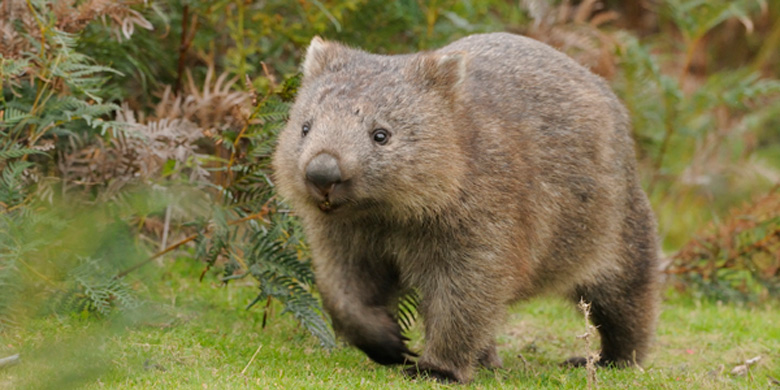
A wombat burrow can be as long as 20 meters. Wombats quickly dig complicated tunnels with their strong legs and sharp claws, and then they push loosened soil away with their hind feet.
Wombats are mostly nocturnal, but during the winter they may sometimes be seen about during the day. They graze for between three and eight hours a night, traveling extensively and visiting up to four burrows within their home range to rest or tidy up the burrow.
These Wombats are solitary creatures, with only one inhabiting any given burrow. The overlap of home ranges does occasionally result in a number of wombats using the same burrow.
The Northern Hairy-Nosed Wombat
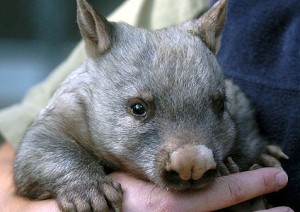
They have longer, pointed ears, a hairy muzzle, and soft, silky fur. The Northern variety average about a meter in length and weigh up to about 35-40kg, with the females being slightly heavier than the males.
Hairy-Nosed Wombats also tend to be more social than their cousins, often inhabiting vast warrens.
There are only about a hundred Northern Hairy-Nosed Wombats remaining in the wild, and none have survived in captivity.
This extremely endangered species can only be found in Epping Forest National Park, in a series of warrens and adjoining grazing land totaling less than 300 hectares.
Attempts are being made to preserve this species, and their numbers have increased from a recorded low of 65 in 1993. In 2003 the total population consisted of 113 individuals, including only around 30 breeding females.
The Southern Hairy-Nosed Wombat
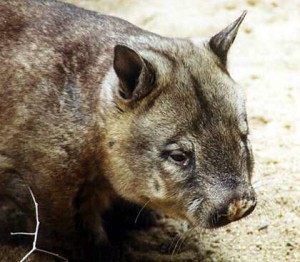
The Southern Hairy-Nosed Wombat inhabits semi-desert and scrub lands, and their bodies have evolved various methods of retaining what little moisture their diet provides. They are found most often in the eastern Nullarbor Plain in the southern part of Australia.
They are the most social of wombat species and often congregate in groups of five to ten animals of both sexes. The warren system is constructed with a central set of burrows usually occupied by the males, while the females reside in smaller warrens within a 150m radius. Their extensive communal warrens are an ideal way of regulating the thermostat during the hot, dry summers in the desert.
Though often slow going, these marsupials have been known to play with apparently limitless energy. Their strength and reports of their ability to run at up to 40kph have earned them the nickname “bulldozers of the bush”, as they trample down any obstacles in their path.
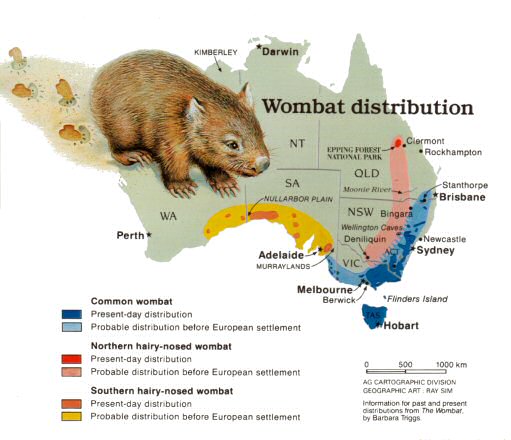
Pingback: Le wombat chie carré | Sirtin science
Pingback: Sirtin » Le wombat chie carré